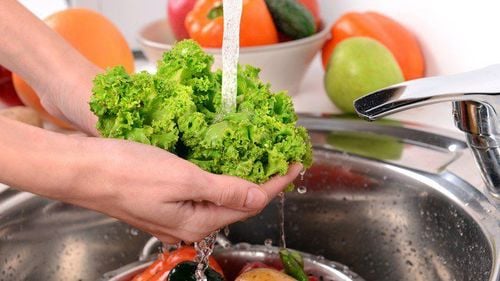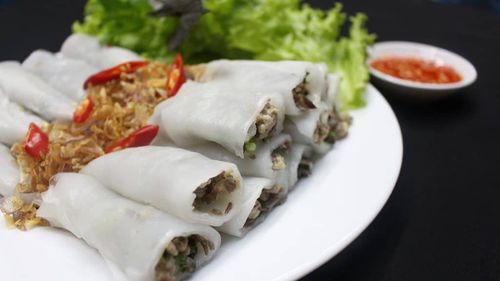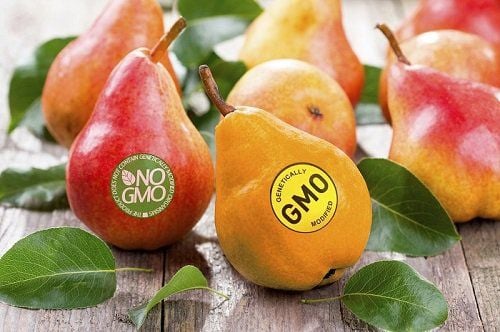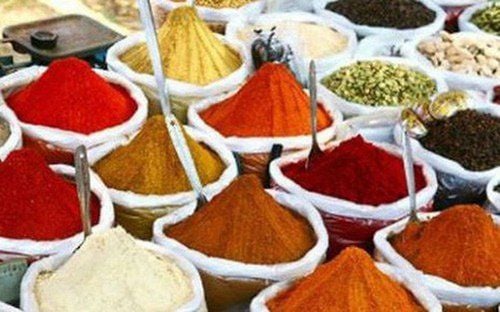This is an automatically translated article.
Using fresh fruits and vegetables is a healthy way to add vitamins, minerals, fiber and antioxidants to your diet. These products should have long been washed with water to remove their surface pesticide residues. The article will show you how to wash vegetables and fruits safely before eating.
1. Why should you wash fresh produce?
Properly washing fresh fruits and vegetables is a good practice to reduce your ingesting harmful pesticide residues and pathogens on these products.
Fresh produce is handled by multiple people before you buy it from the grocery store or farmers market. Therefore, it is possible that not all clean hands have touched this fresh product. In addition, people who come into contact with this product may also have coughed or sneezed, making this product possible to be contaminated with bacteria that can transmit disease.
In the US, federal health officials estimate that each year nearly 48 million people get sick from food contaminated with harmful germs, and some of the causes may surprise you. In recent years, the United States has had several large-scale outbreaks of diseases caused by contaminated fruits and vegetables, including spinach, cantaloupe, tomatoes, and lettuce.
A foodborne illness expert at the US Food and Drug Administration says fresh produce can be contaminated in many ways. During the growing period, produce can be contaminated by animals, harmful substances in the soil or water, and poor hygiene by workers. After the produce is harvested, it passes through the different hands of workers, increasing the risk of contamination. Contamination can even occur after the product has been purchased, during food preparation, or through improper storage or processing.

Rau củ trái cây có thể bị ô nhiễm theo nhiều cách
Therefore, washing fresh fruits and vegetables before use can greatly reduce pesticide or food-protective residues that may be left on these products.
2. Best product cleaning method
Although rinsing fresh produce with water has long been a traditional method of preparing fruits and vegetables before consumption, the current covid-19 pandemic situation has led many to wonder if whether this method is sufficient for cleaning fresh produce such as vegetables.
Some have advocated using soap, vinegar, lemon juice or even commercial cleaners like bleach as an additional measure for cleaning vegetables.
However, food safety and health experts, including the US Food and Drug Administration (FDA) and the Centers for Disease Control (CDC), advise consumers not to Follow this advice and only use clean water to wash vegetables.
Use of the above substances may be more dangerous to the health of the user and is also not necessary to remove harmful drug residues on fresh produce. Ingesting commercial cleaning chemicals such as bleach can be deadly and should never be used to clean food.
Furthermore, substances such as lemon juice, vinegar and cleaning products have not been shown to be more effective than rinsing with water at cleaning fresh produce and may even allow these cleaners to penetrate food.

Chuyên gia về sức khỏe khuyến cáo chỉ nên sử dụng nước sạch để rửa rau củ
While some research shows that using a fruit washer to create neutral electrolyzed water or rinsing with baking soda may be even more effective at removing some of the most harmful substances. However, experts recommend using only standard tap water to be sufficient in most cases.
3. How to wash fruits so that they are clean
Washing fresh fruits and vegetables in tap water before eating is a good habit to protect health.
Note that fresh produce should not be washed until just before you eat it. Washing fruits and vegetables before storing them can create an ideal environment for more bacteria to grow.
Before you start washing fresh produce, wash your hands with soap and tap water. Make sure that any utensils, sinks, and surfaces you use to prepare your produce are thoroughly cleaned before you begin to wash your food.
Start by cutting off any parts of the produce that are bruised or damaged. If you are washing a fruit or vegetable that will need to be peeled, such as an orange, wash the orange before peeling it to prevent any bacteria present on the peel from entering the flesh.

Nên rửa sạch trái cây trước khi ăn để tránh vi khuẩn xâm nhập vào bên trong
General methods for washing vegetables are as follows:
Hard-skinned fruits such as apples, lemons and pears, as well as root vegetables such as potatoes, carrots and radishes, you can clean using Using a soft-bristled brush, this method is especially good for removing dirt stuck in holes or hard to clean on vegetables. Leafy green vegetables. Spinach, lettuce, kale, leeks and cruciferous vegetables like Brussels sprouts and bok choy should have their outermost layers removed, then soaked in a bowl of clean water, then rinse each leaf with water. clean and drain. Berries, mushrooms and other produce that are more prone to breakage can be cleaned under running water and gently rubbed with your fingers to remove surface dirt. Once you've rinsed the fruits, dry them with clean paper towels or a cloth. Products that break or bruise easily, it is best to place them on a towel and gently wipe or roll the towel to dry without damaging them.
Before eating fruits and vegetables, follow the simple steps above to minimize the amount of germs and harmful substances that can get on the surfaces of these products.
Please dial HOTLINE for more information or register for an appointment HERE. Download MyVinmec app to make appointments faster and to manage your bookings easily.
Reference source: healthline.com; fda.gov












